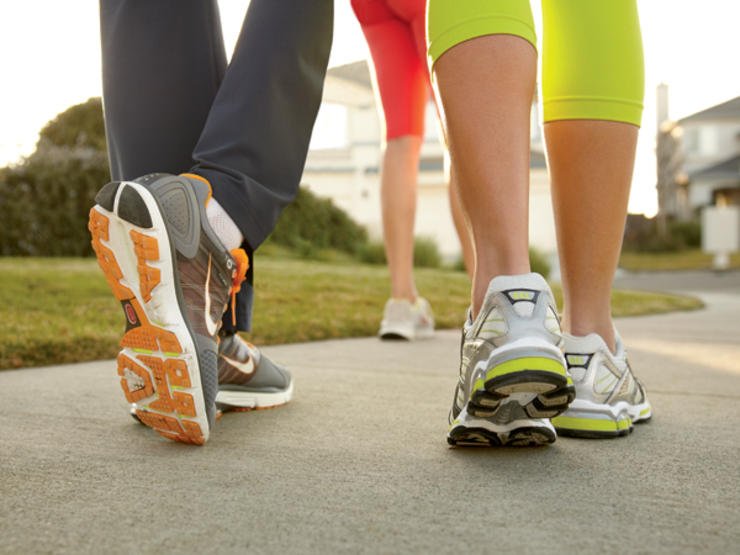power of walking
Health Benefits, fat loss, and how to make it a weekly habit
Walking is one of the simplest yet most effective forms of exercise. Whether you’re looking to improve your overall health, shed some pounds, or establish a consistent exercise routine, walking can be a game-changer. Unlike many other forms of exercise, walking is accessible to almost everyone, requires no special equipment, and can be easily incorporated into daily life. This article explores the numerous health benefits of walking, its impact on fat loss, and provides a weekly exercise program to help you begin and establish walking as a regular habit.
The Health Benefits of Walking
Cardiovascular Health
Walking is a low-impact aerobic exercise that helps to strengthen the heart and improve cardiovascular health. Research has shown that regular walking can lower blood pressure, improve circulation, and reduce the risk of heart disease. A study published in the American Journal of Preventive Medicine found that walking for just 30 minutes a day can reduce the risk of coronary heart disease by 19%. For individuals who walk more frequently and at a faster pace, the benefits are even greater.
Mental Health and Well-being
Walking is not only good for the body but also for the mind. It has been shown to reduce symptoms of anxiety and depression, improve mood, and enhance cognitive function. A study in JAMA Psychiatry highlighted that walking in nature, in particular, can reduce activity in the brain regions associated with mental illness. Regular walking also promotes the release of endorphins, often referred to as “feel-good” hormones, which can boost your overall sense of well-being.
Bone and Joint Health
As a weight-bearing exercise, walking helps to build and maintain bone density, reducing the risk of osteoporosis. It also strengthens the muscles around the joints, which can help alleviate pain and stiffness in conditions such as arthritis. A study published in Arthritis Care & Research demonstrated that walking can reduce pain and improve function in adults with knee osteoarthritis.
Improved Digestion
Walking has a positive impact on digestion by stimulating the digestive system and promoting bowel regularity. This is particularly beneficial after meals, as walking can help to speed up the passage of food through the stomach, reducing bloating and discomfort. A study in Gastroenterology found that post-meal walking significantly improved digestion and reduced symptoms of indigestion.
Enhanced Immune Function
Regular walking can boost the immune system, helping to fend off illnesses like the common cold and flu. A study in the British Journal of Sports Medicine found that people who walked at least 20 minutes a day, five days a week, had 43% fewer sick days compared to those who exercised less frequently. Walking also increases the circulation of immune cells in the body, which helps to protect against pathogens.
Walking and Fat Loss
Caloric Expenditure
Walking is an effective way to burn calories and promote fat loss, especially when done consistently and at a moderate to brisk pace. The number of calories burned during walking depends on various factors, including speed, duration, and body weight. On average, a 155-pound person can burn approximately 149 calories during a 30-minute brisk walk at a pace of 4 miles per hour. Over time, these calories can add up, contributing to weight loss.
Reduction in Visceral Fat
Visceral fat, the fat stored around internal organs, is particularly harmful and associated with an increased risk of chronic diseases such as type 2 diabetes and heart disease. Research has shown that regular walking can help reduce visceral fat. A study in Obesity found that individuals who walked regularly experienced significant reductions in visceral fat over a 12-week period, even without changes to their diet.
Improved Insulin Sensitivity
Walking helps to improve insulin sensitivity, which is crucial for fat loss and the prevention of type 2 diabetes. Improved insulin sensitivity means that the body is better able to use glucose for energy, reducing the likelihood of fat storage. A study published in Diabetes Care found that walking for 30 minutes after a meal improved insulin sensitivity and blood sugar control in people with insulin resistance.
Appetite Regulation
Walking can also help regulate appetite by influencing hunger hormones such as ghrelin and peptide YY. A study in Appetite found that walking reduced the levels of ghrelin, the hormone that stimulates hunger, while increasing levels of peptide YY, a hormone that promotes satiety. This can help reduce overeating and support weight loss efforts.
How to Begin and Establish Walking as a Weekly Habit
Week 1: Start Slow and Steady
Goal: Walk for 15-20 minutes, 3-4 times this week.
Tips: Focus on consistency rather than speed. Wear comfortable shoes and choose a flat, easy-to-walk path.
Week 2: Gradually Increase Duration
Goal: Walk for 20-25 minutes, 4-5 times this week.
Tips: Try to pick up the pace slightly, but still prioritize comfort. Consider inviting a friend to join you for added motivation.
Week 3: Introduce Variety
Goal: Walk for 25-30 minutes, 5-6 times this week.
Tips: Add variety by incorporating different terrains, such as walking on grass or gentle inclines. Walking in new environments, like parks or nature trails, can keep things interesting.
Week 4: Focus on Form and Posture
Goal: Walk for 30-35 minutes, 5-6 times this week.
Tips: Pay attention to your posture—stand tall, engage your core, and swing your arms naturally. This will help you walk more efficiently and reduce the risk of injury.
Week 5: Increase Intensity
Goal: Walk for 35-40 minutes, 5-6 times this week.
Tips: If you’re feeling comfortable, try incorporating intervals of brisk walking for 1-2 minutes followed by 3-4 minutes of slower walking. This can increase calorie burn and improve cardiovascular fitness.
Week 6: Set New Challenges
Goal: Walk for 40-45 minutes, 6 times this week.
Tips: Set small goals, such as reaching a certain distance or walking up a hill. Challenge yourself by timing your walks and trying to improve your pace.
Week 7: Make It Social
Goal: Walk for 45-50 minutes, 6 times this week.
Tips: Consider joining a walking group or making your walks a social activity with friends or family. This can help you stay motivated and make walking a more enjoyable part of your routine.
Week 8: Establish a Long-Term Routine
Goal: Walk for 50-60 minutes, 6-7 times this week.
Tips: By this point, walking should feel like a natural part of your day. Plan your walks at a consistent time each day, whether it’s in the morning, during lunch, or in the evening, to establish a long-term habit.
Conclusion
Walking is a simple yet powerful exercise that offers a wide range of health benefits, from improved cardiovascular health to enhanced mental well-being. It’s also an effective tool for fat loss, especially when done consistently. By following the weekly exercise program outlined above, you can gradually build up your walking routine, making it a sustainable and enjoyable habit. Whether your goal is to improve your health, lose weight, or simply feel better, walking can be the key to unlocking a healthier, happier you.

